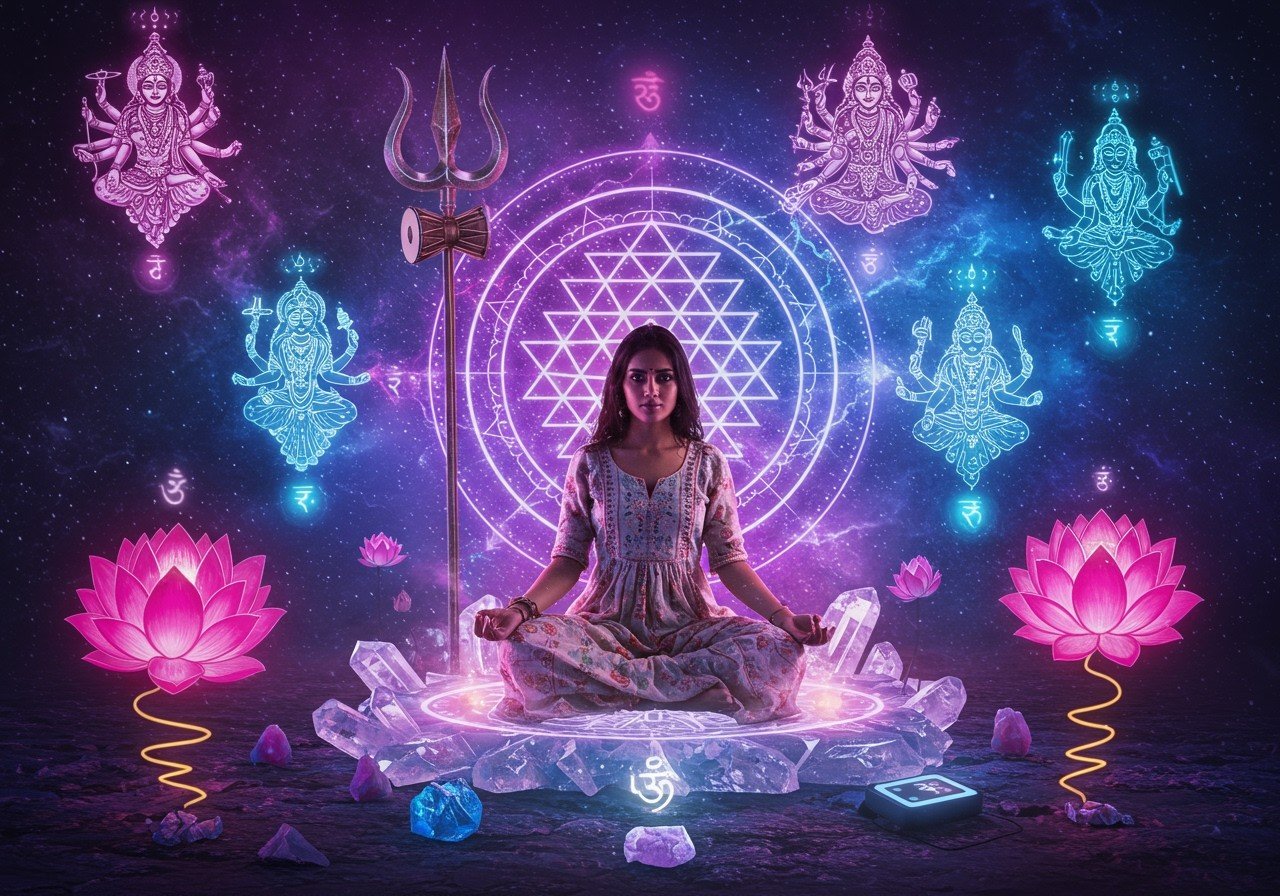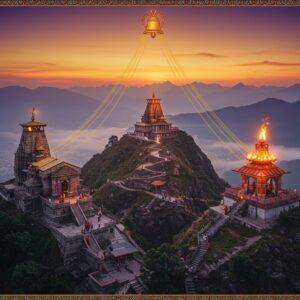
In today’s world, amidst the hustle and bustle, a profound shift is occurring—a resurgence of interest in the divine feminine. Modern Shaktism, a vibrant expression of this energy, is experiencing a renewed embrace, particularly among culturally rooted Indians seeking a deeper connection with their spiritual heritage. This blog post delves into the heart of modern Shaktism, exploring its core beliefs, diverse practices, and the ways it empowers individuals in 2025 and beyond.
Understanding the Essence of Shaktism
Shaktism, at its core, is the reverence of Shakti, the Divine Mother, as the ultimate reality. This powerful tradition, deeply ingrained in regions like Bengal and Assam, views Shakti as the source of all creation, preservation, and transformation. Whether worshipped as the supreme goddess or as the consort of Shiva, Shakti embodies both nurturing and fierce aspects, mirroring the cyclical nature of life, death, and rebirth. For devotees, all female deities are seen as manifestations of this singular, potent force, often referred to simply as Devi (Goddess).
Core Beliefs and Principles of Shaktism
Several key principles underpin the Shaktism tradition:
- Shakti as Supreme Reality: Shakti is considered the ultimate source of everything, with all gods and goddesses emanating from her divine essence. This makes Shaktism unique in its focus on feminine power. It is a belief that goes beyond just worship; it is a deep understanding of the universe’s origin.
- The Dual Nature of Shakti: Shakti embodies both the gentle, nurturing qualities of a mother and the fierce, protective power of a warrior. This duality reflects the full spectrum of life’s experiences, encompassing both creation and destruction. This understanding of Shakti provides a framework to navigate life’s joys and sorrows with equal grace.
- Reverence for the Divine Feminine: Shaktism celebrates the feminine aspect of divinity, recognizing Shakti as the dynamic force behind the universe’s continuous cycle. This emphasis on the feminine creates a space for devotees to connect with the nurturing, creative aspects of themselves.
- The Path of Surrender: Many followers of Shaktism embrace the concept of complete surrender to the Divine Mother. They seek refuge in her boundless love and wisdom, trusting in her guidance on their spiritual journey. This act of surrender offers deep solace and a sense of belonging within the cosmic order.
- Kundalini: In yogic traditions, Shakti is seen as the Kundalini energy, a dormant force residing at the base of the spine. Awakening this energy through practices like yoga and meditation is believed to lead to spiritual enlightenment and liberation. The journey of Kundalini awakening is a personal one, involving self-discovery and a deeper connection to one’s inner power.
Modern Expressions of Shaktism
Modern Shaktism manifests in diverse ways, each offering a unique path to connect with the Divine Mother:
- Folk and Tribal Traditions: In many rural communities, Shaktism takes the form of vibrant folk traditions, deeply connected to nature and local deities. Practices like possession trances, dream interpretations, and animistic beliefs are common, creating a strong sense of community and cultural identity.
- Tantric and Yogic Shaktism: This path emphasizes meditation, visualization, and other spiritual disciplines to awaken the Kundalini energy and experience the goddess as the embodiment of wisdom (brahmajnana). Initiations, mantras, and yantras play a crucial role in these practices. They are often used as tools for spiritual growth and deeper understanding of Shaktism’s esoteric aspects.
- Devotional Shaktism (Bhakti): This path centers around intense love and devotion for a particular form of the goddess. Devotees believe that through heartfelt worship, they can experience Shakti’s presence and blessings in their lives. Bhakti practices are often very personal and emotional, fostering a close, intimate bond with the chosen deity.
While these approaches often intertwine, they can also present different perspectives on the nature of the goddess, leading to rich discussions and varied interpretations within the Shaktism tradition. Are you curious about Maa Manasha and her temples? Delve into the Devotee’s Guide to Maa Manasha and Her Sacred Temples to learn more. Or perhaps you’re intrigued by Lord Vishnu, the preserver? Explore our insightful post on Vishnu, the Preserver for a deeper understanding.
Shaktism in the Western World
Shaktism has also made its way to the West, though often with adaptations and reinterpretations. Shakta Tantra, for example, has sometimes been associated with hedonistic practices, with the goddess viewed as residing within women and sexuality seen as a spiritual path. Kundalini yoga has become popularized, often focusing on health and relaxation benefits. And the worship of goddesses like Kali is occasionally viewed as a form of catharsis.
Recent Developments and Contemporary Trends
Modern Shaktism continues to evolve, embracing contemporary symbols like “Bharat Mata” (“Mother India”) and celebrating the growing visibility of female saints and gurus. New goddesses, like Santoshi Mata, have gained popularity, reflecting the dynamic nature of this ever-evolving tradition. Explore the fascinating world of Shakti Peethas and Navadurga in our blog post, Shakti Peethas and Navadurga: Exploring the Divine Feminine’s Power. For a deeper understanding of karma, reincarnation, and dharma, read our blog post, Karma, Reincarnation, Dharma: An Interconnected Journey.
Poojn.in: Your Companion on the Shaktism Journey
At poojn.in, we understand the deep significance of honoring tradition. That’s why we offer a curated collection of authentic puja items to support your spiritual practice. Whether you’re seeking a beautifully crafted brass Manasha murti, a complete Durga Puja Dashakarma kit, or a serene Ladoo Gopal murti, we have everything you need to create a sacred space in your home.
Embracing Tradition in the Modern Age
Modern Shaktism offers a powerful path for connecting with the divine feminine, blending ancient wisdom with contemporary relevance. Whether you’re drawn to traditional rituals, yogic practices, or devotional worship, Shaktism provides a rich tapestry of spiritual exploration. As we navigate the complexities of modern life, the resurgence of interest in Shaktism offers solace, empowerment, and a deeper understanding of our connection to the Divine Mother.


